|
In addition to its associated health benefits, the use of responsibly sourced certified wood can have significant positive environmental outcomes and help reduce climate change. The temperature of the earth is dependent on the balance between the amount of energy entering the planet’s system from the sun, and the amount reflected and released back into space. The natural greenhouse gas effect is where gases in the atmosphere absorb and retain heat, a natural process that is vital for life on earth. However if these greenhouse gases increase in quantity, more energy is absorbed and the earth heats up. Current atmospheric concentrations of carbon dioxide, the most important anthropogenic greenhouse gas, are 40% higher than preindustrial levels. If the current trend in energy usage continues carbon dioxide emissions are estimated to increase by a further 20% by 203556. The Intergovernmental Panel on Climate Change (IPCC) and other authorities have warned that emissions need to be significantly reduced by 2020 in order to avoid the most dangerous impacts of climate change, with the global economy reaching net zero emissions by 2050 to limit global warming to no more than 2°C above pre-industrial temperatures. In order for this to occur emissions not only need to be reduced, but the number of carbon sinks (which remove carbon from the atmosphere) also needs to be increased. Through the process of photosynthesis trees remove carbon from the atmosphere and store it as biomass, mostly wood. Planting more trees will therefore absorb more carbon and help reduce the impact of emissions. When responsibly sourced wood is used as a building material or to create long-lasting products those items become a carbon store – they lock carbon out of the atmosphere. Using wood as a building material also means that the use of much more carbon intensive and non-renewable materials like concrete and steel can be reduced. One study for example identified that the total energy consumption in the manufacturing of steel beams is 2-3 times higher, and the use of fossil fuels 6-12 times higher, than manufacturing timber beams. In New Zealand it has been estimated that a 17% increase in wood usage in the building industry would result in a 20% reduction in carbon emissions from the manufacture of all building materials, 1.5% of New Zealand’s total emissions. Furthermore innovative timber systems designed for prefabrication and disassembly allow for reuse of the timber, creating a more resource-efficient product life cycle than typical demolition and down-cycling, helping to avoid landfill waste. With the global population growing, increasing rates of urbanization and the construction of new buildings are inevitable. If these new buildings were built with wood they would not only act as a long-term carbon store, but they would generate fewer emissions in their construction. The use of wood in the interior of a building has clear physiological and psychological benefits that mimic the effect of spending time outside in nature. The feelings of natural warmth and comfort that wood elicits in people have the effect of lowering blood pressure and heart rates, reducing stress and anxiety, increasing positive social interactions and improving corporate image. These benefits are particularly important for environments where it is difficult to incorporate nature indoors, such as hospitals where strict health and safety guidelines may prevent the presence of plants, and office environments where views from the window are of roads and neighbouring concrete buildings. Responsibly sourced (and certified) timber has clear health and happiness benefits, as well as being a weapon in the struggle against climate change by both storing carbon and eliminating emissions. Wood is one of the oldest and most versatile building materials used by humanity but it also has a large part to play in the future of health and housing. - Planet Ark
0 Comments
As you know, the Thoma Holz100 building system is 100% pure solid wood without a trace of glue, toxins, chemicals, or VOCs. From nature to your home, it is a completely unadulterated building material exclusively moonwood harvested and naturally air-dried for the highest quality of timber. It requires no additives and offers a plethora of both structural and health benefits. So it is important to know that not only does it fulfill ideal building standards, it also brings its habitants an amazing environment of health and wellbeing. Here are three studies that prove the health benefits of wood on the body: A Japanese study compared the initial physiological response of 14 people sitting in rooms with either wooden or steel wall paneling. The pulse and heart rate of each subject was measured every second for 20 seconds whilst facing the paneled wall covered by a curtain, followed by 90 seconds with the curtain removed and the wooden or steel panel visible. The study found that exposure to wooden panels significantly decreased the blood pressure of subjects, whilst exposure to steel panels significantly increased it. Sakuragawa, S., Miyazaki, Y., Kaneko, T. & Makita, T. Influence of wood wall panels on physiological and psychological responses. 51, 136–140 (2005). An Austrian study examined the heart rates of 30 people who slept in a Stone Pine bed for 3 weeks and compared it to their heart rates when sleeping in a wood imitation bed for 3 weeks. Sleeping in a stone pine bed reduced heart rates by 3500 beats per day compared to when subjects were sleeping in a wood imitation bed. (Joanneum Research Institute of Non-Invasive Diagnosis) A yearlong Austrian study examined 36 high school students aged 13-15 years old who were taught in either a classroom furbished with floors, ceilings, cupboards and wall panels made of solid wood, or a classroom equipped with a linoleum floor, plasterboard walls and chipboard cupboards. The results showed significant differences between the two groups, with students taught in the wooden classrooms having decreased heart rates and decreased perception of stress from interactions with teachers. In contrast, students taught in the control classroom had increased heart rates and had greater stress responses. Kelz, C. & Moser, M. . (Medical University of Graz, 2011) Decreased blood pressure, reduced heart rates up to 3,500 beats per day, decreased perception of stress, and even more can be achieved by simply building with wood! Make your home into an oasis of health and vitality today with Thoma Holz100. From Planet Ark's "Make It Wood"
Schools and offices: studying and working indoors in the absence of nature The health and wellbeing benefits associated with spending time outside in nature are well known and have been studied extensively by the scientific community and reported by Planet Ark.
These known benefits include: • Increased happiness and self-esteem levels • Increased cognitive abilities • Decreased stress response, blood pressure, pulse rates and cholesterol levels However, increasing urbanization rates mean that people have less access to nature in their daily lives and Americans on average now spend about 90% of their time indoors. This coincides with reports of increasing levels of obesity and many experiencing a mental health condition within their lifetime. As it is not always possible to increase our time spent outside, particularly in areas like workplaces, schools and hospitals, understanding how to incorporate the physiological and psychological benefits of nature into our indoor environments is an increasingly important area of research. Studies have demonstrated that simply having a view of nature from a window can have significant positive effects, such as shorter postoperative hospital stays, induced feelings of relaxation in patients at rehabilitation centres and improved comfort levels of employees in offices. Not surprisingly, the presence of indoor plants has also been shown to have benefits, such as improved cognitive functioning in office environments, increased tolerance of pain in hospitals, lowered blood pressure and heart rates. Evidence-based design (EBD) is an area of study that focuses on incorporating the results of empirical research into the quality of the built environment. Originating from the field of environmental psychology, EBD works on the notion that the design of the built environment fundamentally impacts the people within it. Of particular interest are designs of physical features that can lead to stress-reduction, productivity and general wellbeing. Since evidence shows viewing nature in both outdoor and indoor settings has health and wellbeing benefits for people, it is logical to examine whether wood, a natural material, produces similar effects. Holz100 Canada Inc. is focused on raising its standards and efficiency in order to fulfill our clients’ needs and be able to actively maneuver into potential markets in which it has been our privilege and pride to implement over a thousand projects all over the world.
|
| Summary of Benefits:
| Recommended For:
|
| Top fire resistance up to F180 | Exclusive use of high quality timber: 'moonwood' harvesting in high altitudes |
^"WOODCUBE", This first high-rise building class 5 was built entirely of wood (Holz100) and without gypsum encapsulation. Deemed a 'Smart Material House' by IBA Hamburg, Woodcube holds passive house energy standards, is carbon neutral, and provides incredible health benefits for its residents.
Important Links & PDFs
Company Website | www.holz100canada.com
"Make it Wood" by Planet Ark
A great resource for research on wood and its health benefits
WOODCUBE - Smart Material House
An introduction, outline, and details of the award-winning Holz100 project (IBA Hamburg)
Holz100 Canada Booklet 2017
A comprehensive introduction booklet to our building system, by Holz100 Canada Inc.
Holz100 Parts Catalogue 2017
An extensive catalogue of all available Holz100 elements, including technical information.
More Resources | Links & Downloads
CONTACT US
Phone
(416) 876-3388
Email
[email protected]
Hours
Monday to Friday
9:00 AM - 4:00 PM
Address
240 Duncan Mill Road, Suite #500
Toronto, ON M3B 3S6
Canada
Come visit us at our office!
Phone
(416) 876-3388
[email protected]
Hours
Monday to Friday
9:00 AM - 4:00 PM
Address
240 Duncan Mill Road, Suite #500
Toronto, ON M3B 3S6
Canada
Come visit us at our office!
Building with the forest:
Everything remains valuable
In the production of Holz100 homes, everything remains valuable. This concept of waste-free recycling economy provides us with a sustainable, growing forest. Holz100 opens up new dimensions of sustainable construction with the first true circulation concept in the construction industry.
Since 1990, Thoma has been developing building materials that not only have a positive impact on the health of the residents, but also on the environment. The Thoma company relies on natural wood.
Holz100 is an award-winning solid wood building system and was the first building material in the world to be awarded the gold "Cradle to Cradle" certificate. It consists of nothing but untreated wood that has been harvested to the proper lunar phase and is completely free of toxic additives such as glue, chemicals, or wood preservatives.
Wood treated with glue or wood preservatives is not only harmful to the health of the residents of the house due to its outgassing, it must also be disposed of as hazardous waste in case of demolition. However, this is not so for Holz100 homes. It is completely natural and can be reused after generations of use both thermally and materially.
To recycle a Holz100 house you only have to dissolve the mechanical connections that hold the house together. With the raw materials released, a new house can be built.
Holz100 homes are prefabricated in factories that run on solar power in which no waste is produced. In the production of our Holz100 walls, all processing is optimized so that almost no waste is produced here as well. The small amount of waste that may be produced can be thermally recovered and immediately supply the production plants with energy.
As it is in the forest, everything stays in circulation and we can create a future suitable for grandchildren.
Raw materials in the cycle
Even when laying the individual components, care is taken to ensure that as little as possible of the precious raw material wood is lost. Window and door openings are recessed.
A farmer from the surrounding area of our Holz100 plant in Stadl picks wood chips from the production of our houses. "The chips are perfect for mucking out my stables - they are dry and pure in nature!"
It does not look like this with us! The waste from the wood glue binder production would have to be disposed of as hazardous waste as shown above. Our factories however, are devoid of and encounter no such problem.
Energy generation then and now
The steam engine that drove the saw Gußwerk 1907 is still standing. It is no longer in operation.
Today, a highly efficient biomass cogeneration plant supplies the saw and the village of Gußwerk with green electricity. Small remainders from the Holz100 production are also used to generate energy.
Solid wood is not only the safest material when it comes to fire, flood or earthquakes, but it also protects its inhabitants from all kinds of harmful, high frequency electromagnetic waves. It completely stops, for example, mobile phone frequencies. This has been confirmed by research conducted by the Bundeswehr University in Munich.
It has also been found that wood is best suited for the construction of rooms with the highest level of surveillance protection required as well. Thanks to this finding, Dr. Thoma's company has received a number of orders to build various structures for the German army.
This seven-floor hotel is built completely out of Holz100 – 100% pure wood. It proves day by day the incredible static strength of this natural, raw material. More so, there is even a huge swimming pool located on the seventh floor which boasts a open-air panoramic view of surrounding mountains. Starting from the day that its foundation was laid, the time that it took to officially open its doors only took 2 months.
This is the Austrian, state-of-the-art film archive, which houses 70,000 historical nitro-film reels. Fumes from the film erode rebars in reinforced concrete and therefore wood becomes most suitable for this purpose. This archive requires no external sources of electricity, and the constantly monitored temperature is at 3 degrees Celsius throughout the year as fluctuations are unacceptable in this case. In the summer, the facade warms up to an average temperature of twenty degrees Celsius from the outside and only a small, solar-powered air conditioner is at work.
To obtain such a result, the building has been modeled after a red ant forest anthill.
The larval hatching chamber at the center of the mound is exceptionally resistant to variations in outdoor temperatures. For this purpose, a research project was created, which involved the best BMW specialists in engine thermodynamics. It turned out that wood has two completely unique thermodynamic properties. 1 kg of wood accumulates 2.5 times as much heat as 1 kilogram of stone, and the time required to change its temperature is much longer than any other natural, raw material.
To obtain such a result, the building has been modeled after a red ant forest anthill.
The larval hatching chamber at the center of the mound is exceptionally resistant to variations in outdoor temperatures. For this purpose, a research project was created, which involved the best BMW specialists in engine thermodynamics. It turned out that wood has two completely unique thermodynamic properties. 1 kg of wood accumulates 2.5 times as much heat as 1 kilogram of stone, and the time required to change its temperature is much longer than any other natural, raw material.
This is the Haramura church near Fukushima in Japan which withstood a well-known earthquake for its destruction. Moreover, it is capable of surviving typhoons of up to 200 km per hour. One should know that for concrete, it is irreversibly damaged once it passes breaking point. Wood, on the other hand, flexes, shifts into the elastic phase, and then returns to its original form.
In 2012, Dr. Thoma's company built an energy self-efficient 5-floor commercial wooden building in Hamburg. This is ArcheNEO in Oberndorf, Tirol. A 6,600 square meter office complex, in which tenants’ leases state that they will not have to pay even a penny for heating throughout the year. The whole complex is built out of wood and not a trace of chemicals were used. Its temperature is regulated by heat pumps powered by photovoltaic batteries located on the roof.
Absence of glue between layers create microscopic air gaps. There are additional air channels between some layers, allowing for improved thermal insulation. In this field, it has been so far assumed that the highest heat transfer coefficient (U-value) that wood can achieve is 0.14. However, this is true for glue laminated wood. Unglued and mechanically linked walls of Dr. Thoma have achieved a result twice as efficient; a U-value of 0.078. As such, a 36 cm thick Holz100 wall would provide a similar insulation to a 75 cm thick, solid, glue-laminated wooden wall (CLT) or a 10 m thick reinforced concrete wall.
Leaving out chemicals and toxins in the processing of Holz100 surprisingly led it to break the world record in thermal insulation for building materials. The results were so unbelievable that initially the Frauenhofer Institute in Stuttgart denied to issue a certificate. Over time, both the Frauenhofer and the Graz Technical University confirmed the results and issued relevant certificates.
The U value does not tell us everything, however; it turns out to be a poor manipulation created to favor thermal insulation manufacturers. In a laboratory experiment at the University of Graz, three walls with identical heat transfer coefficients were compared: an internally insulated prefabricated wall made of gypsum and particle board; a brick wall with Polystyrene insulation; and a 30 cm solid wood wall (holz100). The test room was at a room temperature without heating, and the outside temperature was -10 degrees Co. The test measured the time, in which the internal wall would reach 0 degrees Co. To reach 0 Co, It took 2 days for the prefab wall, the insulated brick wall took 10 days, and finally the solid wood wall (holz100) required over a month of time.
Moisture is yet another problem in construction. Water vapor and condensation is such a difficult issue that no company in the world can guarantee construction materials free of condensation and mold growth for more than 5 years. Lower Saxony's research has revealed recently that 80% of all homes equipped with styrofoam thermal insulation have developed mildew between the wall and the styrofoam. Mold is one of the worst poisons of all that can toxicate residential buildings.
Dr. Thoma guarantees his Holz100 houses for 50 years against moisture and mold. He has already built over 1000 houses in 33 countries, from the tropics to the Arctic Circle and, so far, has not received a single complaint.
to Dr. Erwin Thoma's book, "A Future with Natural Wood"
Wow. Definition:
Exclamation: expressing astonishment or admiration
Noun: a sensational success
Verb: to impress and excite (someone) greatly
This informal word best expresses the reaction I share with all those who understand and appreciate the significance of Erwin Thoma's creation - Holz100. In this, his first book translated into English, you will find interesting and amusing stories that reveal Erwin's wealth of knowledge regarding trees, forests and wood. Perhaps, for some readers, this book will contain more information than they imagined possible for such subjects. For others, this will be a welcome introduction to wood-related subjects and an inspiration for a future using natural wood. Written in a colloquial style, it offers an insight into his humble genius.
For any advocate of environmentalism, this book should not only help clear up those myths regarding the use of wood as a building material but also reinforce the fact that this totally sustainable, natural resource, when used responsibly, is the best alternative to all other construction materials.
As an architect, I wish to highlight one aspect of this book that explains the remarkable building system invented and manufactured by Erwin that has won numerous awards and a loyal following in Europe.
I met Erwin for the first time about ten years ago. I heard about his company that manufactured a structural building system using 100% wood. It was advertised to have no glues, toxic chemicals, resins or mechanical fasteners. It was so well engineered that one could build multi-story buildings out of it or construct a single-family house in only days, not months.
Then I began to learn about the rest of the "wow;" the thermal mass of the product providing comfort to the occupants while greatly reducing energy costs; persons with allergies could live in these buildings without suffering from hidden toxins or allergens; sound attenuation was remarkable; hotels and spas built from this material were receiving rave reviews from guests who slept better, were more relaxed and enjoyed the smell of the forest unique to Holz100 buildings. Finally, I learned that the manufacturing process was equally astonishing in that it recycles its waste wood in special clean-burn furnaces that, with supplemental solar panels, create more than enough electricity and heat to operate the facility.
So here I was introduced to a major structural building system based on ancient construction techniques, using state-of-the-art technology, and with a totally sustainable source of material as its basic ingredient - produced "off the grid" no less. This is truly the ultimate "cradle to cradle" product.
I expect to see this wonderful system produced in the United States in the coming years as its unique qualities - described thoughtfully and passionately in these pages - comes to the attention of builders, developers, architects and homeowners looking for the ultimate green building material.
- Gordon R. Pierce, Architect
"The realization of my dream to create the very best buildings in the world is the development of our prefabricated solid Holz100 House. A good energy-efficient home should not only be comfortable, natural and healthy. It needs to have excellent ratings regarding insulation (heat, cold, acoustic, electromagnetic radiation), fire safety, and air conditioning." - Dr. Erwin Thoma
We found wood has many hidden qualities and we developed a traditional building technique into a new and healthy 'High Tech' innovation. The name means pure, 100% wood, nothing added. With a Holz100 house, walls, ceilings and roof are made of large, solid and prefabricated wooden panels which can be erected in a very short space of time. These elements are made of untreated wood, no glues, laminates, or nails.
To build with Holz100 elements results in high-performance ratings which previously were thought of as impossible.
Holz100 elements consist of boards and battens which, piece by piece, are lying horizontally next to each other making up the size of the panel. The second layer is stacked diagonally, the third layer vertically and so on. These layers form elements as thick as is required for walls, ceilings and floors.
The question now is how to keep them together and end up with cohesive building elements. The solution lies in wood itself.
As early as antiquity itself and at the time of ancient Egypt, large blocks of rock were exploded and split by swelling wood. Lacking explosives and machinery, people fitted bone-dry wooden dowels into holes and cracks. Then, they just added water. Dry wood absorbs the moisture and expands. This irresistibly strong force even splits granite boulders. It is one of the strongest forces in nature and we harness it for our Holz100 elements.
Holes are drilled through all the element's layers, each consisting of individual battens lying next to each other. Then kiln-dried wooden dowels are driven into the neatly fitting holes. Even in dry climates a wooden wall always retains rest moisture (ranging from 6% to 15% relative moisture content). The moisture of the surrounding wood is absorbed by the dowel which swells and expands tightly into its hole. Because no room climate anywhere in the world can be as dry as in a kiln, this joint can't ever be dissolved other than by drilling it out.
Because the layers are stacked crisscross, the patented Holz100 element is solid. It can be rendered, tiled or painted. The advantages of building with purely natural, untreated wood are mainly in the following areas:
Fire Safety
Warmth and Noise Insulation
Air Conditioning
Cooling Down Time
Radiation Shielding
Earthquake Safety
Scientific tests, publications and building certifications were undertaken at several different universities and institutes in Austria, Germany, Norway, Japan and USA which are now available through the Erwin Thoma Research Centre.
Author
Holz100 Canada Inc.
Archives
July 2019
May 2019
September 2018
August 2018
July 2018
June 2018
May 2018
April 2018
March 2018
February 2018
January 2018
December 2017
November 2017
October 2017
September 2017
August 2017
Categories
All
Earthquake Resistance
Fire Safety
Flood Proof
Forests & Energy
Health
Indoor Environment
Introduction
Projects
Radiation Shielding
Recommendations
Soundproofing
Thermal Insulation
Tree Species
Trees & Wood
What To Avoid
Why Holz100?


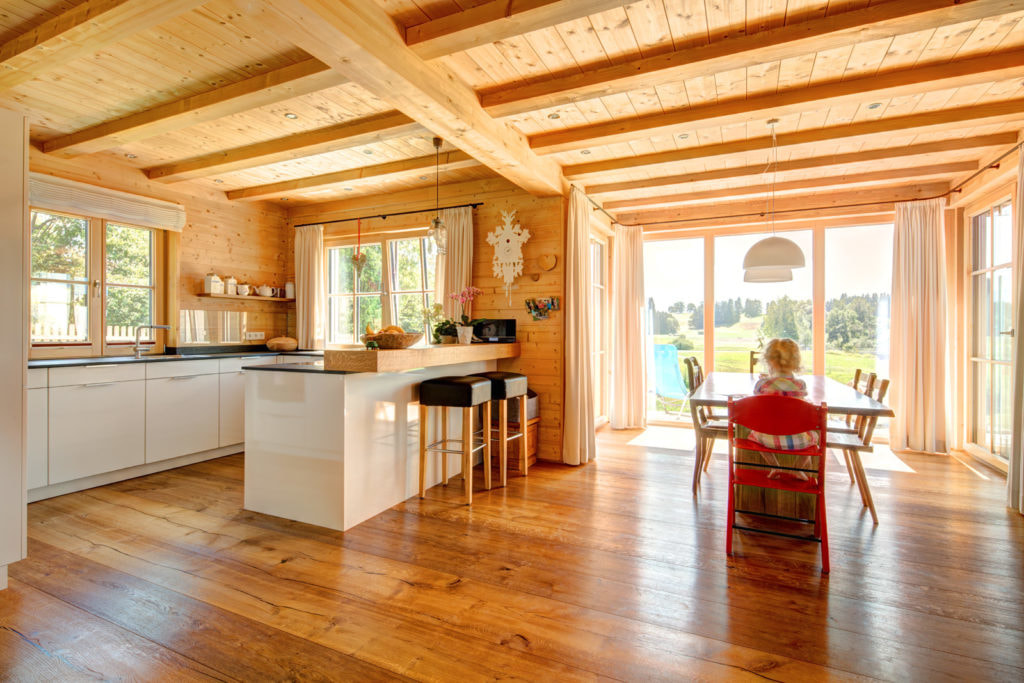




















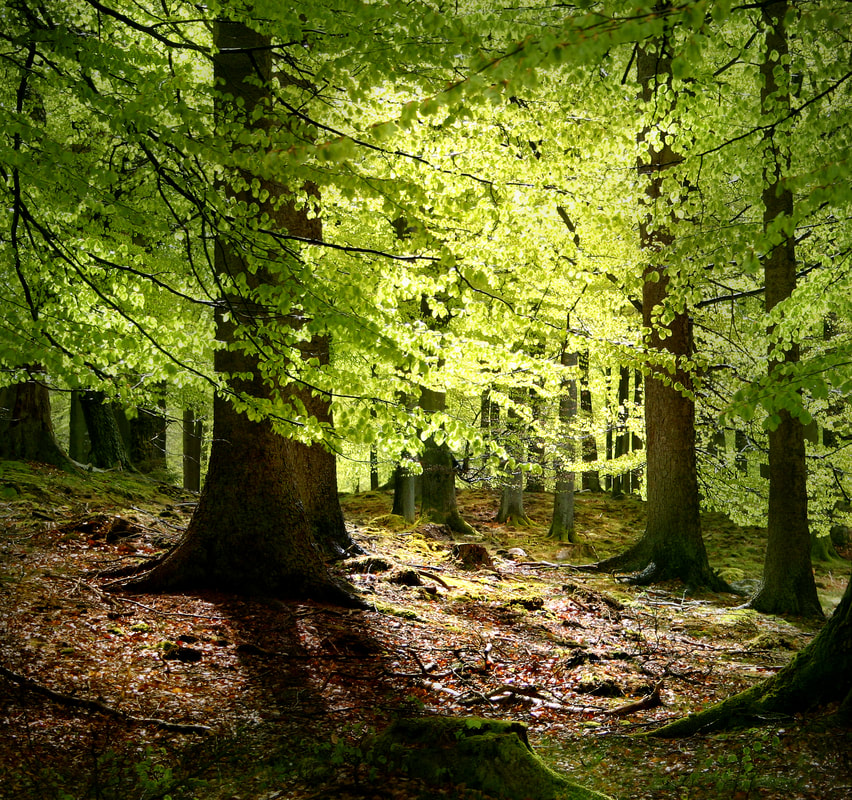









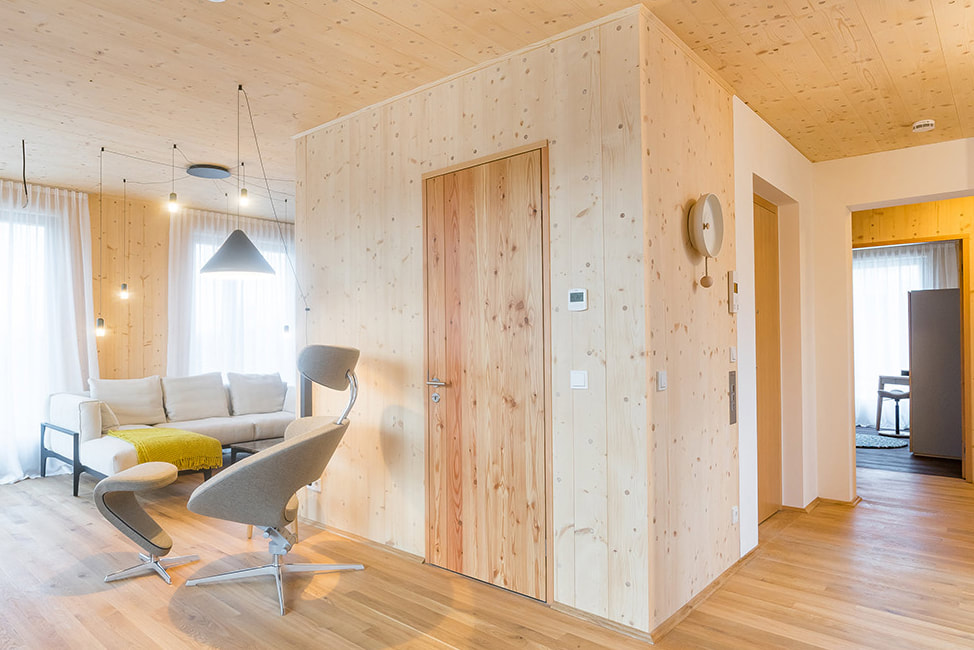






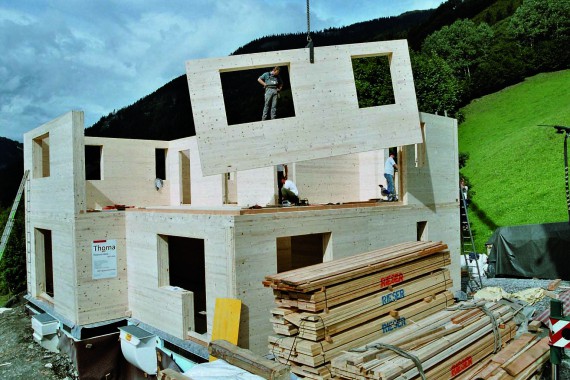


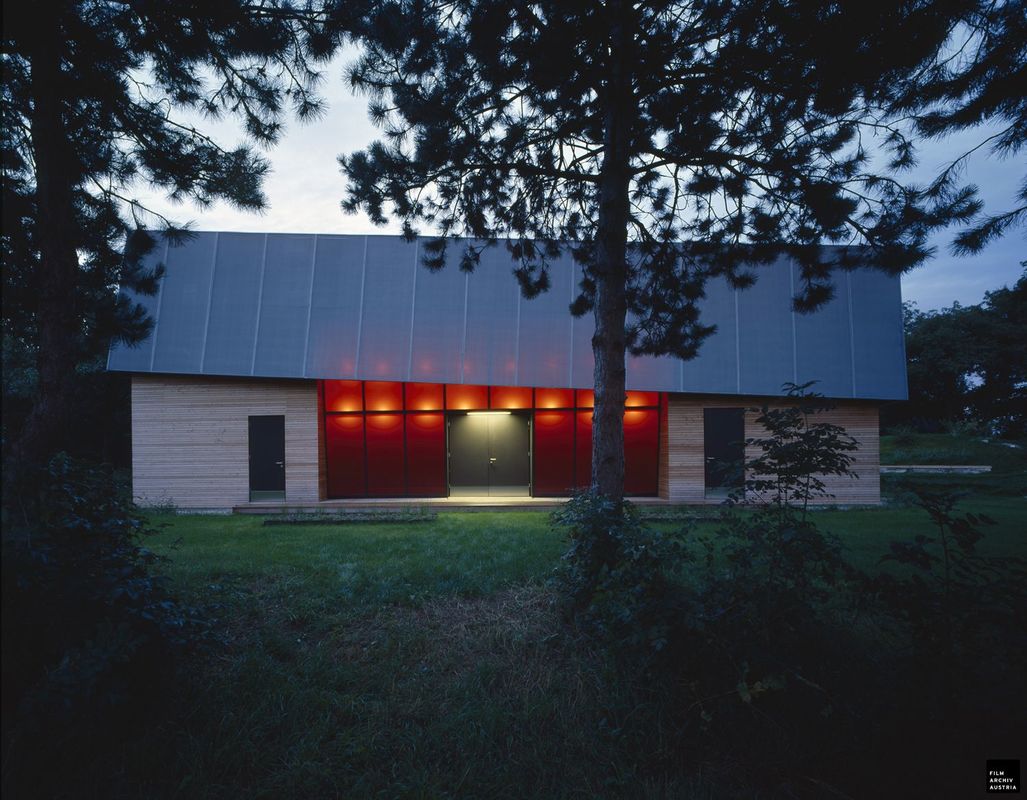
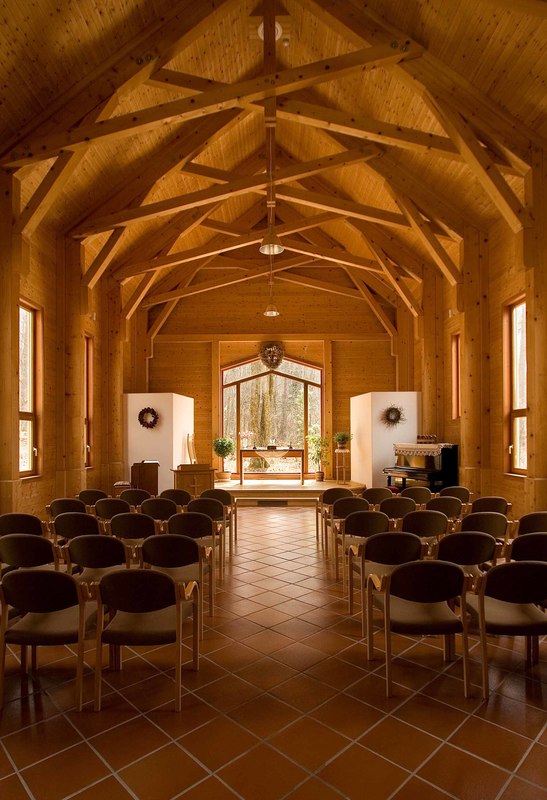
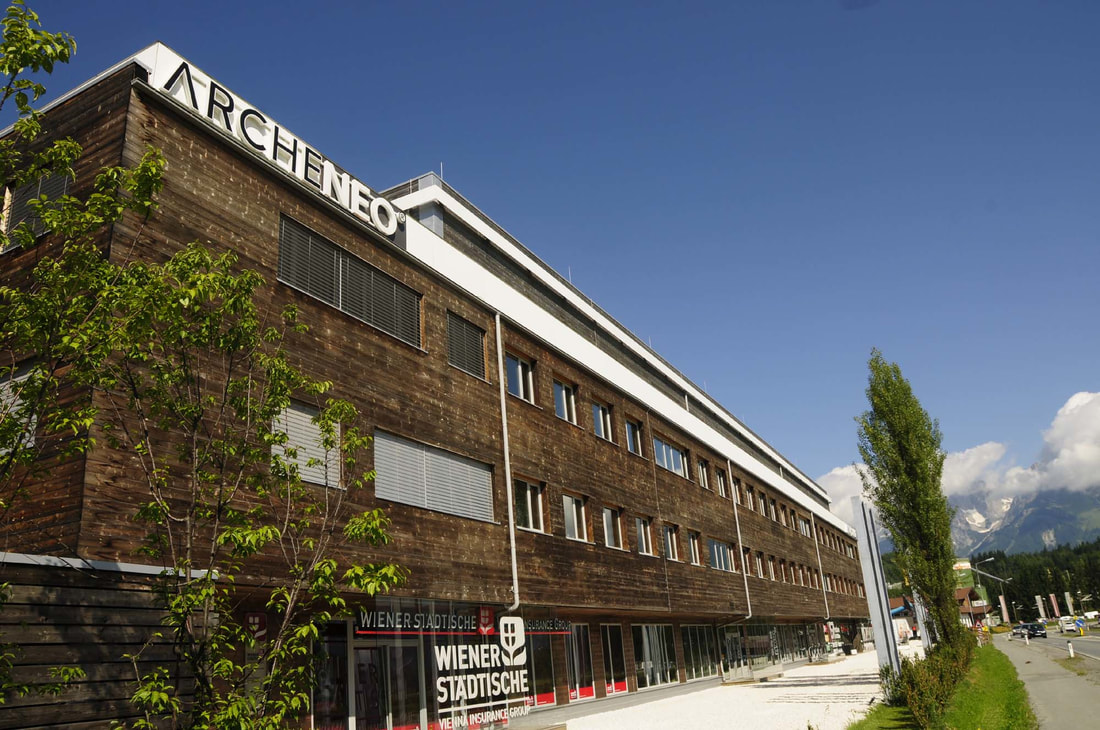



 RSS Feed
RSS Feed


